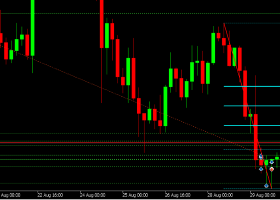Forming a partnership with a corporate giant can make a huge difference for a fairy small company. The classic example is Microsoft’s partnership with IBM in the 1980s.
Once IBM started using Microsoft’s operating system in its early PCs,
Microsoft was well on the way to global domination.
Last week IBM announced a partnership deal with a UK technology company called Monitise. Analysing the company data, the columnist of Money Week Ed Bowsher reflects on if a similar success is possible in respect of Monetise.
What does Monitise actually do?
It is a ‘mobile money’ company. Its software enables users to manage their finances on their mobiles. This means users can check their bank accounts on a mobile as well as make transfers and payments. The Monitise technology also enables different financial institutions to ‘talk’ to each other and facilitate financial transactions.
Monitise offers three main products:
1. ‘Bank Anywhere’, which enables users to check their bank accounts on their mobiles;
2. ‘Pay Anyone’ which gives users the freedom to pay bills from anyone to anywhere;
These two products allowed Monitise to build working relationships with more than 350 financial institutions worldwide. These include Royal Bank of Scotland, Visa, MasterCard and HSBC. Its relationship with Visa has been especially close – Visa Europe owns a 6% stake in Monitise, while Visa in the US has 5%. Monitise is also working with some non-financial companies too – the best-known is Telefonica. There’s plenty of potential here for mobile phone networks to use the ‘Pay Anyone’ technology and muscle in on the banks’ traditional monopoly in payment services.
3. ‘Buy Anything’. It’s a secure shopping platform for mobiles.
In July, Monitise announced a deal with IBM which was then strengthened last week. The partnership means that IBM will now market Monitise technology under the IBM brand to a wide range of businesses, including retailers and mobile phone networks.
Some of Monitise’s staff will move across to IBM, and Monitise products will now include some IBM technology. Monitise technology will now be hosted at IBM ‘big data’ centres.
There are no guarantees here, but it is likely that this partnership with IBM could deliver a big boost to Monitise’s growth.
It’s also worth mentioning that IBM has a partnership with Apple to market the iPhone as the best mobile offering for business – that may open up further opportunities for Monitise.
Monitise shares have already been eyed
Monitise shares have already been observed in a MoneyWeek article called ‘Five small cap stocks worth a flutter’ back in February. The shares were trading at 68p at that point – they’ve fallen to 48p since then.
That amply illustrates some of the risks you take when you invest in small caps. So what was behind the fall?
The company had warned that revenue would be about 30% below expectations for the year ending June 2014. Monitise’s explanation for the fall was that it had adjusted its business model.
Previously, customers were expected to pay a large upfront free, and then pay much smaller recurring licensing fees. Monitise is now charging smaller or non-existent upfront fees in exchange for higher recurring payments later on. This seems like a sensible move to me. The change should mean that more customers will sign up as they won’t have to pay so much money upfront. All being well, it should enable Monitise to make more money in the long term as the recurring payments continue to be made.
That said, even after this year’s fall in the share price, Monitise looks expensive at first glance. The company isn’t making any profit, and that isn’t likely to change until 2016. Full-year results are expected later this month, but it looks like revenue will come in around the £93m mark.
With a £961m market cap, that will put Monitise on a very hefty price/sales ratio of ten. The ratio is so high that I can’t help thinking back to the mad dotcom days of 1999/2000, when so many tech companies were overvalued.
What’s more, Monitise could get squeezed out by competitors. There’s lots of speculation that the likes of Google and Facebook will want to enter the mobile banking space. If that does indeed happen, there are no guarantees that these big tech companies will partner with Monitise.
And although there’s a strong chance that Monitise will become a major player in mobile banking, it may be tougher to become a major player in mobile commerce where there’s more competition. (That said, Monitise’s recent acquisition of the company behind the Myvouchercodes website, Markco Media, may help in this area.)
It’s also worth noting that Monitise is one of the most shorted shares on the London stock market. In other words, a lot of investors have placed a bet that the Monitise share price will fall.
But, despite the high valuation and other potential risks, Monitise is an attractive, high-risk growth play.
Yes, it could all go wrong. But there are no doubts that mobile banking and mobile commerce will grow rapidly from here, and the IBM deal makes me more confident that Monitise can be a major player in this area.



